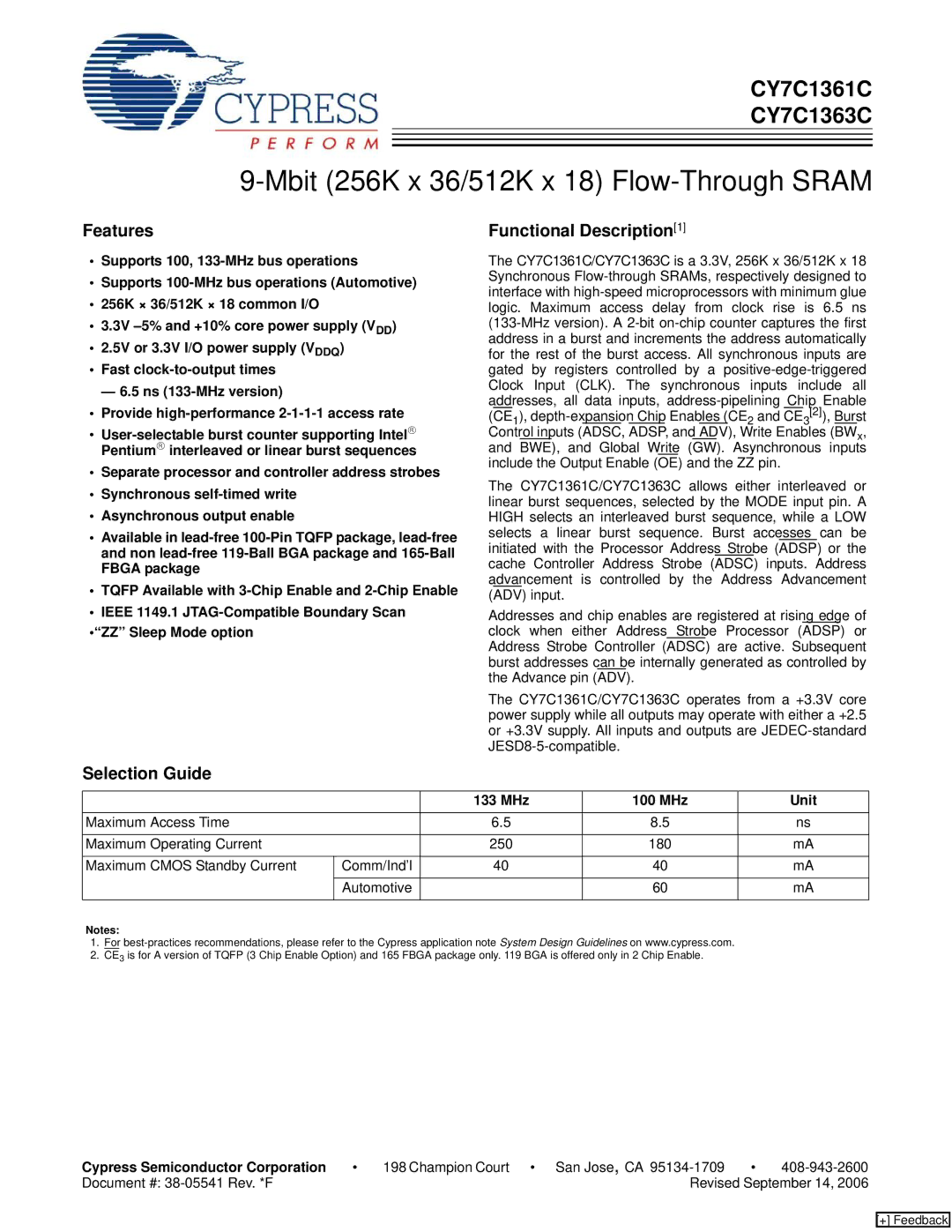
CY7C1361C
CY7C1363C
9-Mbit (256K x 36/512K x 18) Flow-Through SRAM
Features
•Supports 100,
•Supports
•256K × 36/512K × 18 common I/O
•3.3V
•2.5V or 3.3V I/O power supply (VDDQ)
•Fast
— 6.5 ns
•Provide
•
•Separate processor and controller address strobes
•Synchronous
•Asynchronous output enable
•Available in
•TQFP Available with
•IEEE 1149.1
•“ZZ” Sleep Mode option
Selection Guide
Functional Description[1]
The CY7C1361C/CY7C1363C is a 3.3V, 256K x 36/512K x 18 Synchronous
The CY7C1361C/CY7C1363C allows either interleaved or linear burst sequences, selected by the MODE input pin. A HIGH selects an interleaved burst sequence, while a LOW selects a linear burst sequence. Burst accesses can be initiated with the Processor Address Strobe (ADSP) or the cache Controller Address Strobe (ADSC) inputs. Address advancement is controlled by the Address Advancement (ADV) input.
Addresses and chip enables are registered at rising edge of clock when either Address Strobe Processor (ADSP) or Address Strobe Controller (ADSC) are active. Subsequent burst addresses can be internally generated as controlled by the Advance pin (ADV).
The CY7C1361C/CY7C1363C operates from a +3.3V core power supply while all outputs may operate with either a +2.5 or +3.3V supply. All inputs and outputs are
|
| 133 MHz | 100 MHz | Unit |
Maximum Access Time |
| 6.5 | 8.5 | ns |
|
|
|
|
|
Maximum Operating Current |
| 250 | 180 | mA |
|
|
|
|
|
Maximum CMOS Standby Current | Comm/Ind’l | 40 | 40 | mA |
|
|
|
|
|
| Automotive |
| 60 | mA |
|
|
|
|
|
Notes:
1.For
2.CE3 is for A version of TQFP (3 Chip Enable Option) and 165 FBGA package only. 119 BGA is offered only in 2 Chip Enable.
Cypress Semiconductor Corporation | • | 198 Champion Court • San Jose, CA | • | |
Document #: |
| Revised September 14, 2006 | ||
[+] Feedback
